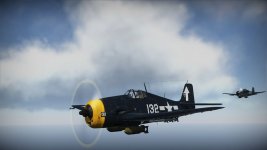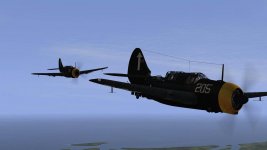There are quite a few, as you might imagine. The best, IMO, are by John Lundstrom. These include 'The First Team: Pacific Naval Air Combat from Pearl Harbor to Midway' and 'The First Team and the Guadalcanal Campaign: Naval Fighter Combat from August to November 1942'. Lundstrom has also done a couple of excellent bios, one on Butch O'Hare titled 'Fateful Rendezvous' and one on Adm. Jack Fletcher titled 'Black Shoe Carrier Admiral', both figures loom large in US Naval aviation. Barrett Tillman has done many books with titles covering such carrier aircraft as the F4F Wildcat, F6F Hellcat, F4U Corsair, and the SBD Dauntless. The 2 books by Stephen Moore that I listed in the earlier post are good. There are all sorts of battle histories on Coral Sea, Santa Cruz, Midway, etc. Eric Hammel wrote 'Carrier Strike: The Battle of the Santa Cruz Islands, October 1942' and 'Carrier Clash: The Invasion of Guadalcanal and the Battle of the Eastern Solomons, August 1942'. Two other useful bios on pilots are Steve Ewing's 'Thach Weave: The Life of Jimmie Thach', and 'Reaper Leader: The Life of Jimmy Flatley', again, both huge influences in US Naval aviation of the time. These titles are all good on the early war period and how US Naval Aviation developed into the war-winning weapon it became. If Midway is of interest, there are books by Gordon Prange, Peter Smith, Walter Lord, Mitsuo Fuchida, and especially Parshall and Tully's 'Shattered Sword: The Untold Story of the Battle of Midway'. I cannot recommend the Lundstrom 'First Team' books or 'Shattered Sword' too highly as they are simply superb books from both a research and writing POV. -- Al



